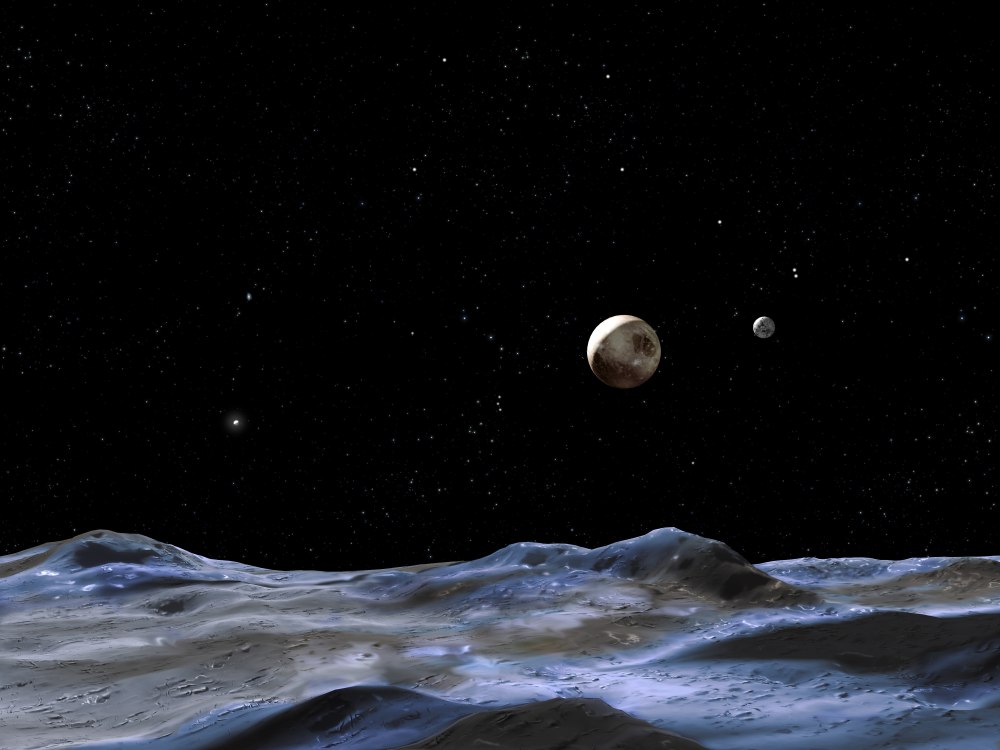It’s a lot of speculation right now, but the buzz in a new NASA study is Pluto’s largest moon (Charon) could have a cracked surface.
If the New Horizons mission catches these cracks when it whizzes by in 2015, this could hint at an ocean underneath the lunar surface — just like what we talk about with Europa (near Jupiter) and Enceladus (near Saturn). But don’t get too excited — it’s also possible Charon had an ocean, but it froze out over time.
“Our model predicts different fracture patterns on the surface of Charon depending on the thickness of its surface ice, the structure of the moon’s interior and how easily it deforms, and how its orbit evolved,” stated Alyssa Rhoden of NASA’s Goddard Space Flight Center in Maryland, who led the research.
“By comparing the actual New Horizons observations of Charon to the various predictions, we can see what fits best and discover if Charon could have had a subsurface ocean in its past, driven by high eccentricity.”
It seems an unlikely proposition given that Pluto is so far from the Sun — about 29 times further away than the Earth is. Its surface temperature is -380 degrees Farhenheit (-229 degrees Celsius), which — to say the least — would not be a good environment for liquid water on the surface.
But it could happen with enough tidal heating. To back up, both Europa and Enceladus are small moons fighting gravity from their much larger gas giant planets, not to mention a swarm of other moons. This “tug-of-war” not only makes their orbits eccentric, but creates tides that change the interior and the surface, causing the cracks. Perhaps this might have kept subsurface oceans alive on these moons.

Since Charon once had an eccentric orbit, perhaps it also had tidal heating. Scientists think that the moon was created after a large object smacked into Pluto and created a chain of debris (similar to the leading theory for how our Moon was formed). The proportionally huge Charon — it’s one-eighth Pluto’s mass — would have been close to its parent planet, causing gravity to tug on both objects and creating friction inside their interiors.
“This friction would have also caused the tides to slightly lag behind their orbital positions,” NASA stated. “The lag would act like a brake on Pluto, causing its rotation to slow while transferring that rotational energy to Charon, making it speed up and move farther away from Pluto.”
But this friction would have ceased long ago, given that observations show Charon orbits in a stable circle further away from Pluto, and there are no extraneous tugs on its path today. So another possibility is there was an ocean beneath the moon’s surface that today is a block of ice.
The study was published in April in the journal Icarus. And by the way, some have even speculated that Pluto itself could have an ocean.
Source: NASA


Very interesting and informative! Thanks for Charon this!
That should be 39, no?